Day three in Siem Reap, day three of temple viewing in Angkor Park. Hey, we bought a three day ticket; might as well make the most of it, right?
The temple of women?
Our destination today was Banteay Srei, a temple that's quite a bit further from Siem Reap. About an hour's tuk-tuk ride or a 45-minute drive. It's often visited as part of the Grand Circuit, though it's actually a decent detour from there, maybe another 30 minutes each way. We'd opted not to go yesterday, which would've been more efficient and a bit less expensive, but would've meant visiting the temple in the hottest part of midday. Instead, we went this morning, when it was relatively cool and quiet and we had a half day to devote just to the area. It cost a few dollars extra, but so what? When will we ever be back here again?
Banteay Srei actually used to require a separate entrance ticket, but was changed a few years ago to be included in the Angkor Pass. The 10th-century temple is known as the Temple of Women, which is a translation of the Khmer name. Some say it's so beautiful that it either resembles a beautiful woman, or it had to be built by a woman, or some variation on that story. All are misnomers; the name is a mistranslation, and the earlier names of the temple probably just state that it was dedicated to the Hindu god Shiva.
In any case, the temple is relatively small, but full of intricate carvings out of red sandstone with a level of detail unsurpassed by anything we'd seen to date. It's not stunningly imposing like Angkor Wat or Bayon, or an outgrowth of the jungle like Ta Prohm. But the statues, towers, and inscriptions had a beauty all their own, making the trip worth it just for that.
We spent about an hour visiting the temple and its grounds. There's a small botanical garden and a little interpretation centre with details about the temple and its history, inscriptions, and discovery and reconstruction. None of the other temples had this quality of information, so we found it a bit interesting to check out for a few minutes.
And that's a wrap on Angkor's temples for us, folks. Three days, ten major temples. Not bad for a couple of heat-averse Canadians, eh?
The horror of land mines
Mr Saroth greeted us at the parking lot and we turned to head back, but not without a couple of stops first. Just a few minutes down the road from the temple, there's a small museum and education centre dedicated to the awareness, dismantling, and eradication of the use of land mines in Cambodia and around the world. During the American war, Cambodia was bombed for years as part of the US effort to cut off the so-called Ho Chi Minh Trail. Later, the Khmer Rouge heavily used land mines against the Vietnamese during the Civil War. As a result, there are an estimated two million undiscovered landmines and countless other unexploded munitions here in Cambodia, which continue to destroy lives even years after peace has been achieved.
The small four room museum was built by Akira, a former child soldier drafted into the Khmer Rouge at age 10, who later defected to the Vietnamese army. Trained in his youth to place mines, since the end of the war, he has dedicated his life to dismantling them. He's estimated to have disarmed more than 50,000 mines, at first using unauthorized methods considered to be highly dangerous, and then later earning certifications to dismantle them safely and teaching others to do so. He's also an activist in encouraging countries to support the treaty to end the use of anti-personnel mines, and his original museum also had a children's centre where child victims of land mines lived and were supported. The children's centre closed some years ago, as all the children living there had mostly grown up and moved on to families and jobs of their own, but the museum continues.
There was nothing particularly new about the message, that land mines are bad. But Akiro's personal story was quite interesting. The museum also houses several hundred disarmed bombs and mines from various sources and wars to serve as examples.
So many butterflies
The last stop we made before exiting Banteay Srei's park area was at the BBC. Nope, not the TV network, the Banteay Butterfly Conservation project. It's a small butterfly preserve located about fifteen minutes from the temple, dedicated to rescuing and farming endangered butterfly species and protecting them from predators.
Entering through the double gates, we were ushered into a small netted garden paradise. Butterflies, butterflies everywhere! Brilliantly coloured butterflies, dozens of species of them, flying around us, feasting on the nectar of the many varieties of plants and flowers left out for their enjoyment, as well as plates of fruit. The lush botanical garden is grown and lovingly maintained in order to give every butterfly its preferred snack food, it seems. There are brilliantly coloured flowers, plants, leaves, and water features. Lizards and dragonflies flew nearby.
The butterfly guide explained that they manage every step of the lifecycle, from incubating and protecting the eggs, to moving the larvae to a larger container to incubate when they're ready, to cultivating the caterpillars. It's hard work, but they obviously take great care in their project. All the proceeds from ticket sales go towards supporting the conservation efforts.
I was quite glad that we'd made this butterfly preserve our final sight here in Cambodia. It was a lovely high note on which to wrap up our visit here.
Poolside lunch
We got back to Siem Reap just after noon, hastily showered to rinse off the sand and dust from the long tuk-tuk ride, repacked our bags, and checked out. We had about an hour at that point to find some lunch, but only a small amount of Cambodian Riel left, and we didn't feel like changing more US dollars only to have to change them right back again.
After looking unsuccessfully in the hot sun for inexpensive an open restaurant nearby, Ryan found a grocery store and bought some yogurts and bananas, and I ordered a sandwich from the hotel restaurant for us to share. We ate it poolside, quickly filling up on whatever we could since, for COVID safety reasons, we don't feel safe removing our masks on planes or in airports, so it would be a long time before we could eat dinner. And then, not wanting to get dusty and dirty again, we declined Mr Saroth's offer of a tuk-tuk ride to the airport and opted to call a Grab taxi instead.
That's a wrap, Cambodia
And with that, we depart Cambodia, the third and final Southeast Asian country on our race through the region. It's been a quick but action-packed five and a half days, which isn't nearly enough to experience even a small fraction of what this country has to offer. Still, though, I feel like we saw a lot in a short time. The bright lights and flash of Phnom Penh contrasted well with the ancient magnificent temples of Siem Reap. We road on riverboats, postal vans, and tuk-tuks, celebrated the New Year and Ryan's birthday, and saw the sunrise over Angkor Wat, which has been on my bucket list practically forever. We even tasted both craft beer and craft chocolate. Mission accomplished!
Cambodia has been quite different from both bustling Thailand and laid-back Laos. It's been the hottest and buggiest place we've been so far, which isn't doing any wonders for me, but that's okay. The people have been lovely. The food here is delicious and so inexpensive. The natural beauty is astounding. There are sights here that you can't see anywhere else. And it's hard to not be amazed by how much and how quickly Cambodia has managed to recover from its tumultuous recent past. There's still a long way to go, but the Cambodia of today is an amazing place.
On the downside, the reliance on, and suffering from the lack of, tourism are both far more evident here. It's hard to walk five steps without being asked if you want to buy a scarf, hire a tuk-tuk, drink a coconut. I'm generally not a fan of what I call "harassment culture" countries, but I kinda understand the reasons here. Also, Cambodia feels the least confident in its homegrown culture, ironically. There was more English and less Khmer here (I barely learned a few words), and it was usually easier to find a Thai, Korean, Chinese, or American restaurant than a Khmer one (though we did eat at them wherever we could). It oddly feels more Americanized here, especially in Siem Reap but even in Phnom Penh, than it did in more developed Thailand. Perhaps I would've needed to get out of the two main tourism cities and visit some smaller towns and villages for a more authentic experience, which is something I surely would've done if only I'd had more time to explore. Maybe next time.
Now we're in the airport in Siem Reap about to board our flight for the coda of our trip, a return to Thailand to see the south of the country. It feels almost like a bonus segment of the trip, since we've seen, came, and chocolate tasted in all three countries already. But we figured, hey, honeymoons are supposed to have beach time, right? So we're going to spend a few days on a beach. Which would be all well and good except that the forecast is calling for rain. Wouldn't it be ironic if, after three weeks of solid sunshine, we encountered the first rain of our trip at the beach. But, what will be will be. At least it's not a snowstorm, right?
Bye, Cambodia. More tomorrow from Thailand.

 Krong Siem Reap, Siem Reap Province, Cambodia
Krong Siem Reap, Siem Reap Province, Cambodia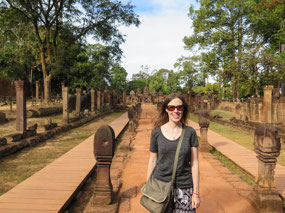
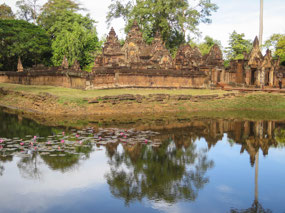
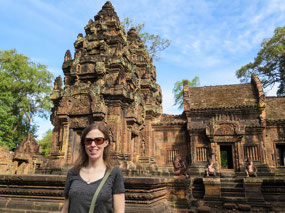
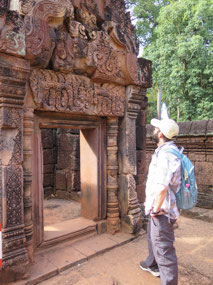
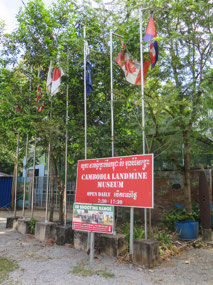
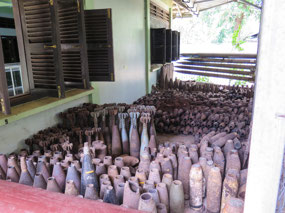
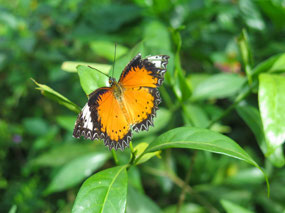
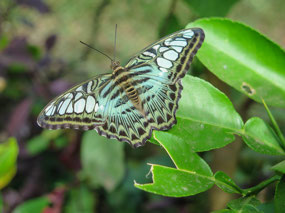
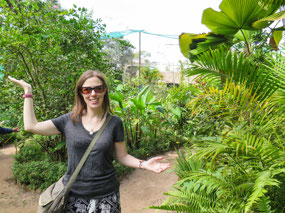

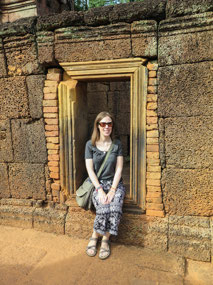
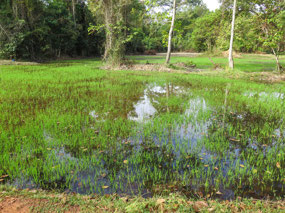
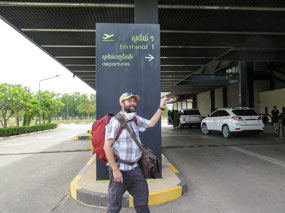





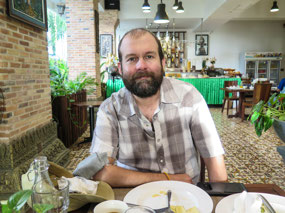
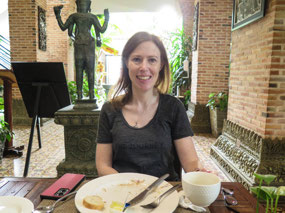
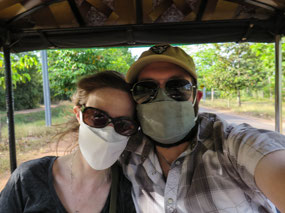
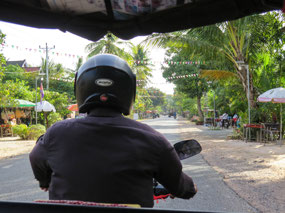
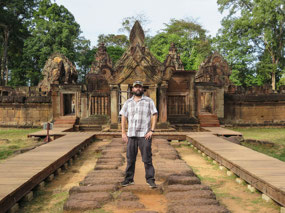
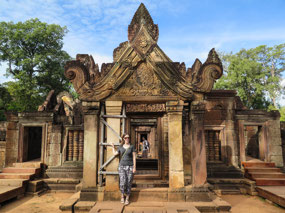
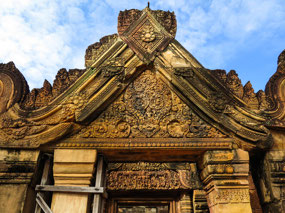
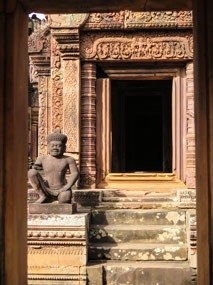
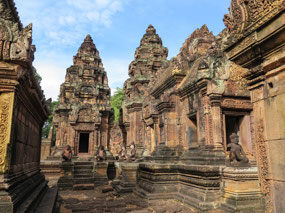
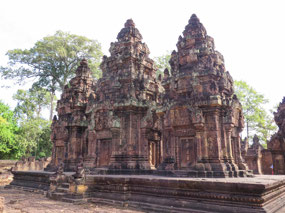
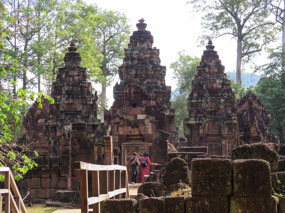
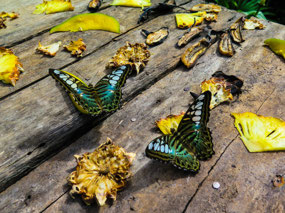
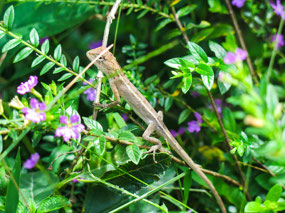
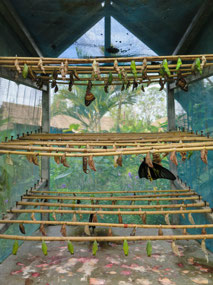
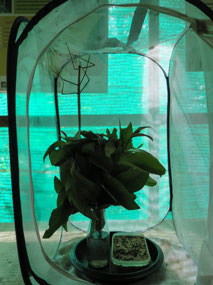
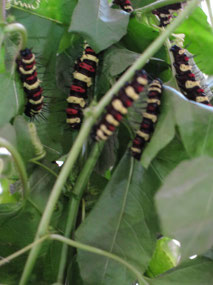
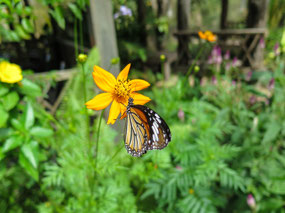
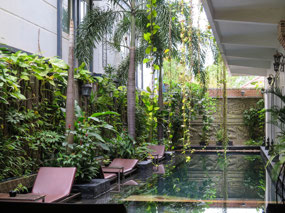
2025-05-23